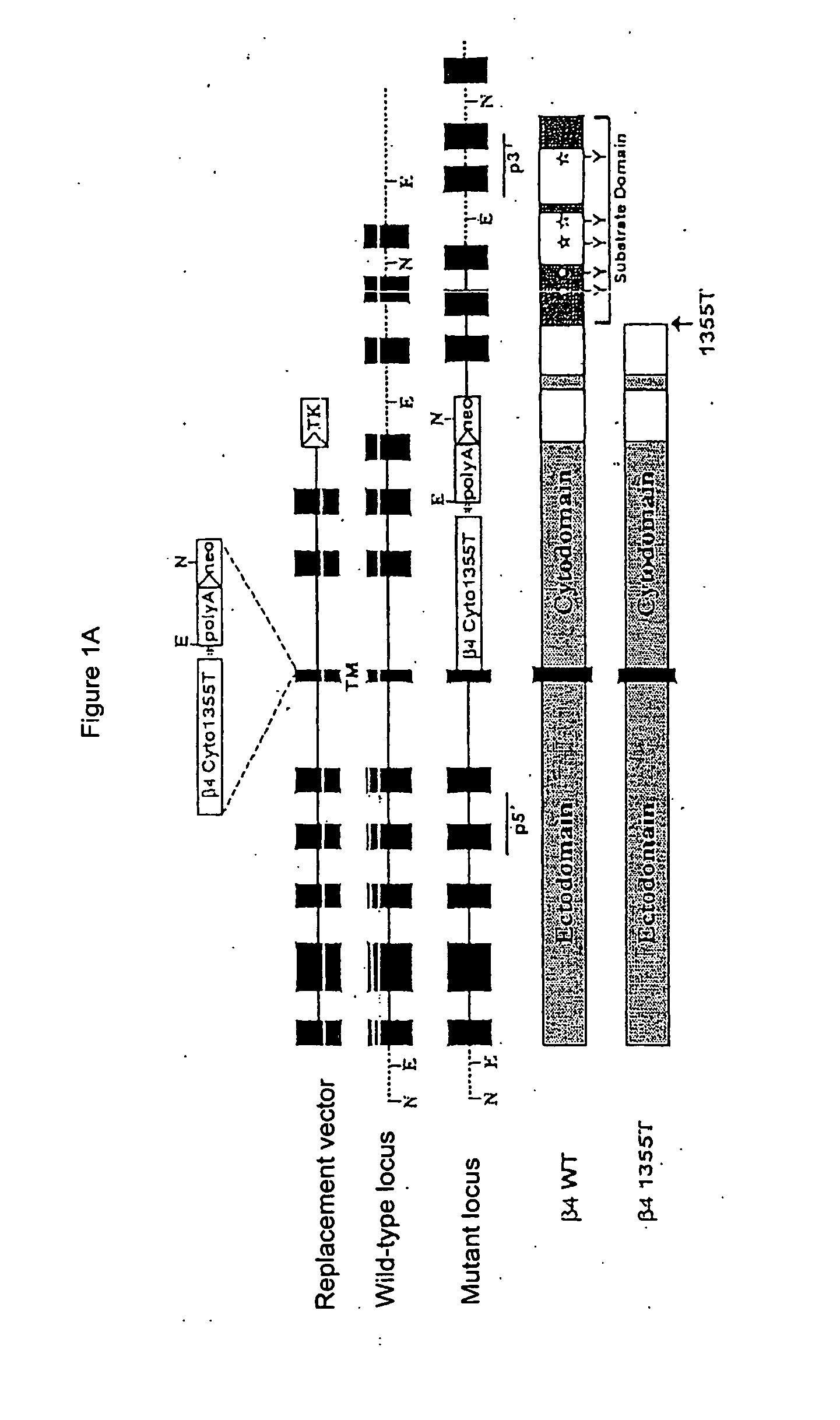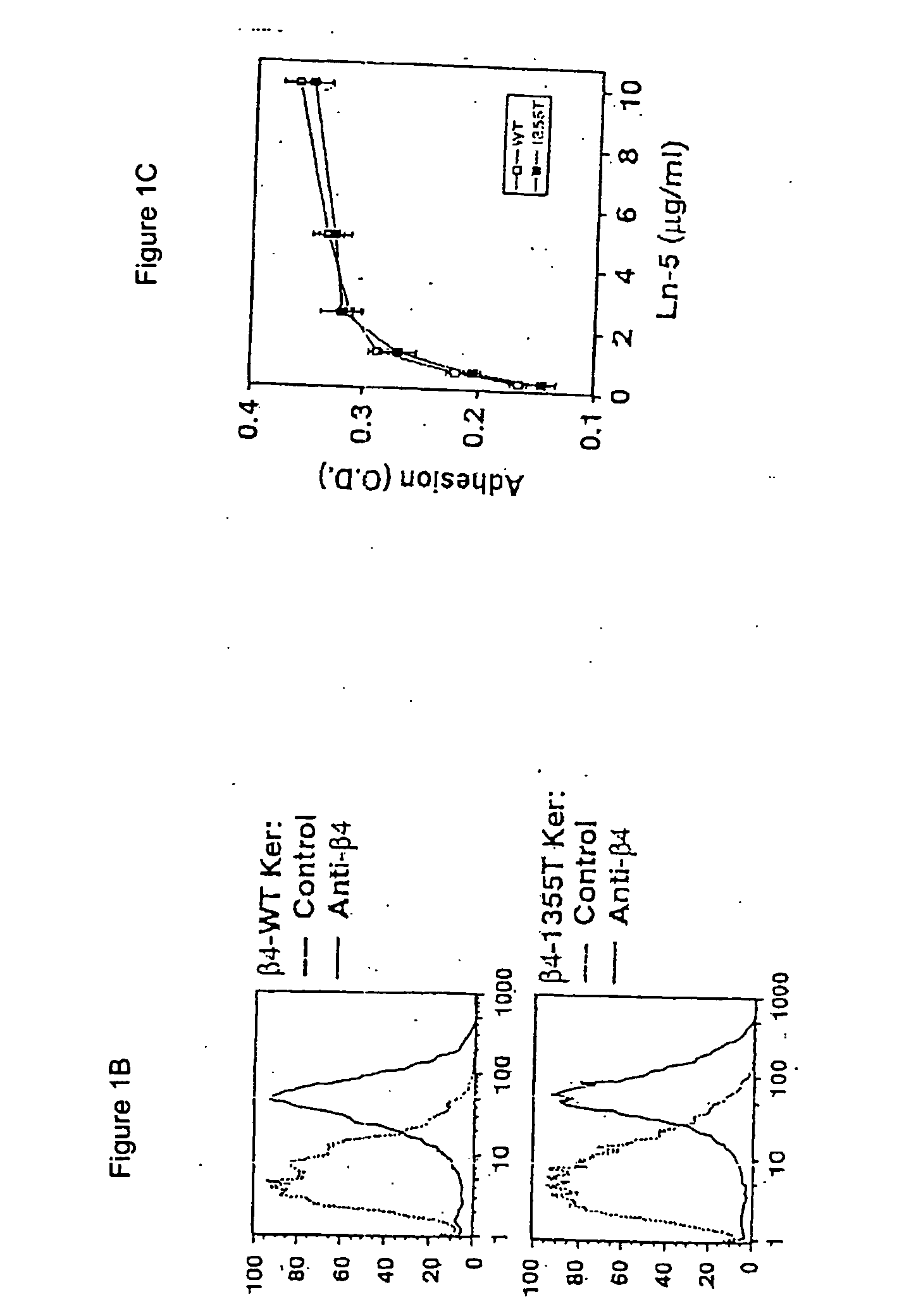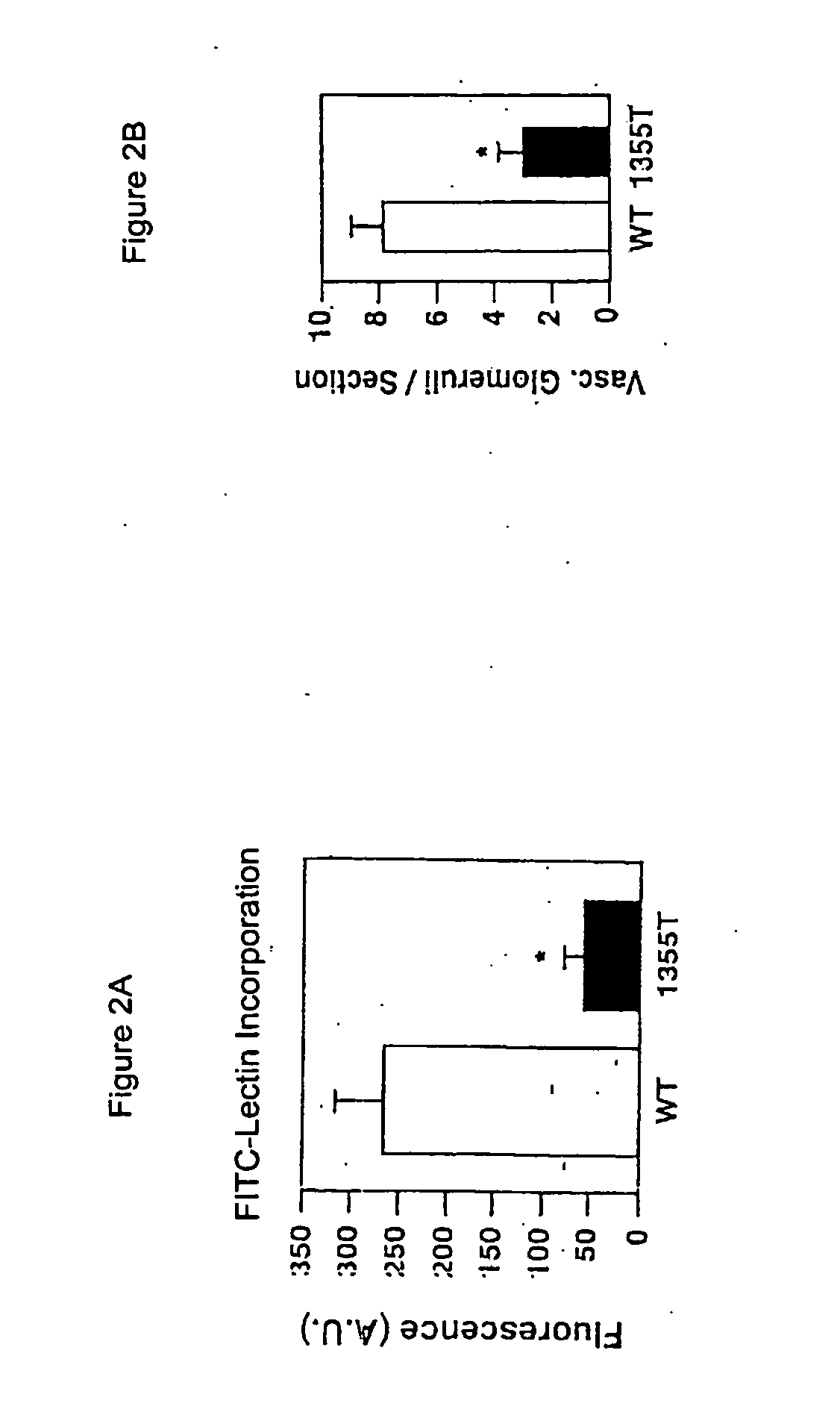Methods for controlling pathological angiogenesis by inhibition of a6b4 integrin
a technology of pathological angiogenesis and inhibition of a6b4 integrin, which is applied in the direction of integrin superfamily, antibody medical ingredients, genetically modified cells, etc., can solve the problems of 4 impairing the survival of breast carcinoma cells, and the anti-angiogenic therapy based on inhibition of 51 integrin is problematic, so as to reduce the amount of active 64 integrin and inhibit its normal adhesive and signaling functions
- Summary
- Abstract
- Description
- Claims
- Application Information
AI Technical Summary
Benefits of technology
Problems solved by technology
Method used
Image
Examples
Embodiment Construction
[0023] As used in this application, the term “pathological angiogenesis” refers to angiogenesis which is considered medically abnormal and suitable for therapeutic treatment. Pathological angiogenesis occurs in a variety of disease conditions, including without limitation cancer, diabetes, rheumatoid arthritis, and eye diseases such as macular degeneration(Folkman, Nat. Med. 1995: Kerbel and Folkman, Nat. Rev. Cancer 2002). The term cancer refers to pathological growths, both benign and malignant, of a variety of tissue origins and histological apperances, including without limitation colorectal cancer, breast cancer, prostate cancer, pancreatic cancer, lung cancer, mesothelioma, melanoma, osteosarcoma, hepatocellular carcinoma, hemangioblastoma, renal cell carcinoma, Kaposi's sarcoma, gastrointestinal stromal tumor (GIST), Glioblastoma Multiforme (GBM) and other brain tumors, myeloma and other hematopoietic malignancies such as chronic and acute leukemias and lymphomas, myelodispla...
PUM
| Property | Measurement | Unit |
|---|---|---|
| temperature | aaaaa | aaaaa |
| pH | aaaaa | aaaaa |
| adhesion | aaaaa | aaaaa |
Abstract
Description
Claims
Application Information
 Login to View More
Login to View More - R&D
- Intellectual Property
- Life Sciences
- Materials
- Tech Scout
- Unparalleled Data Quality
- Higher Quality Content
- 60% Fewer Hallucinations
Browse by: Latest US Patents, China's latest patents, Technical Efficacy Thesaurus, Application Domain, Technology Topic, Popular Technical Reports.
© 2025 PatSnap. All rights reserved.Legal|Privacy policy|Modern Slavery Act Transparency Statement|Sitemap|About US| Contact US: help@patsnap.com



